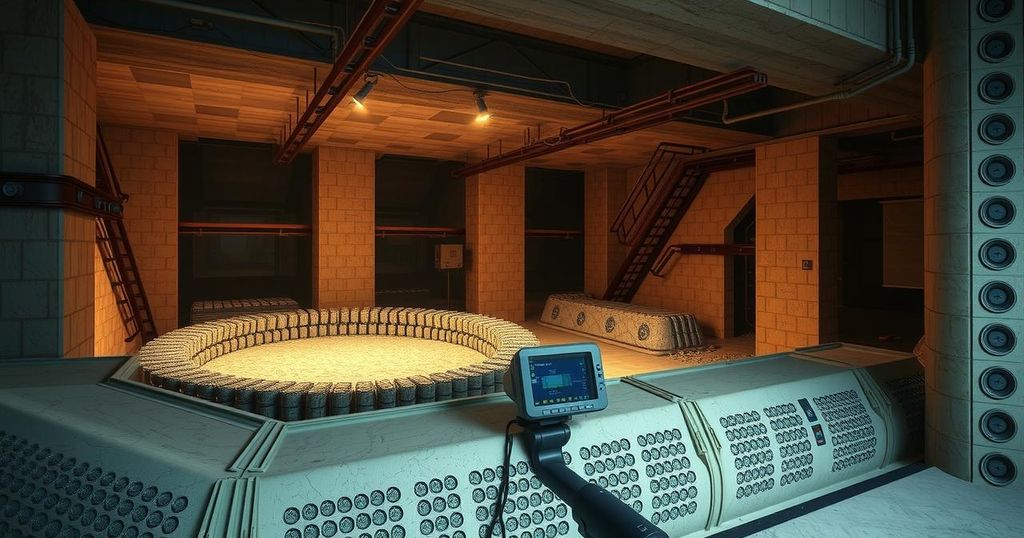Iran’s IRGC unveiled an underground missile base it claims was used in operations against Israel. The facility showcases advanced missile systems and represents a strategic military development amid rising regional tensions. With enhanced missile capabilities, the IRGC aims to project power and respond to internal and external challenges while signaling to both domestic and international audiences.
On January 10, the Islamic Revolutionary Guard Corps (IRGC) of Iran publicly introduced an underground missile facility it asserts was instrumental in recent operations against Israeli military targets, as reported by the state news agency Mehr. This revelation represents a significant shift from the initial days of Iran’s missile industry, as the IRGC seeks to bolster its image domestically amid rising criticism from hardliners due to geopolitical challenges, particularly in Syria.
The unveiling took place during a ceremony attended by IRGC Commander Major General Hossein Salami, who characterized the site as an “underground missile city” that contains advanced missile systems developed within the country. The facility reportedly houses a variety of strategic liquid-fueled missile systems, including the Emad, Qadr, and Qiam, with only a fraction of the site—approximately 10%—being disclosed to the media.
The IRGC designated the operations conducted from this base as “True Promise 1 and 2,” which targeted Israel amid ongoing exchanges of strikes. Salami emphasized the IRGC’s continuous enhancement of missile capabilities, stating, “The enemy thought our production capacity had been interrupted, but our missile power growth rate is up to date,” and noted that Iran’s missile capabilities are evolving in terms of quantity, quality, and design. He further hinted at future expansions of the facility network, proclaiming, “Soon, we will witness the inauguration of underground missile and drone complexes.”
Amid escalating tensions between Iran and Israel, both nations have exhibited restraint in their military engagements recently. IRGC General Hajizadeh highlighted the facility’s rapid activation potential, describing it as capable of being mobilized “like a dormant volcano.” He asserted that Iranian missiles had successfully bypassed multiple levels of Israeli air defenses in a recent strike, which rendered the Nevatim airbase non-operational.
The IRGC plays a crucial role in Iran’s military apparatus, having been established to safeguard the Islamic Republic from internal and external threats following the 1979 Islamic Revolution. Reporting directly to the Supreme Leader of Iran, the IRGC governs significant military, intelligence, and economic assets while overseeing the nation’s missile program and nuclear sites. Its elite Quds Force significantly influences regional operations and strategies.
The unveiling of the underground missile facility by the IRGC highlights the ongoing military rivalry between Iran and Israel. Historically, the IRGC has acted to protect Iran’s Islamic system against perceived threats, which has led to a robust missile program that serves as a deterrent to foreign adversaries, particularly Israel. The tensions have been exacerbated by geopolitical developments in Syria and other regions, prompting the need for a show of strength from Iranian leadership. This facility is a crucial aspect of Iran’s military strategy as it showcases advancements in missile technology and the ability to conduct precise military operations against adversaries.
In conclusion, the IRGC’s display of an underground missile base underscores Iran’s commitment to enhancing its military capabilities in the face of regional adversities, particularly from Israel. Through this revelation, Iran seeks to convey its readiness and technological advancements in missile production, while simultaneously addressing internal pressures from political hardliners. The strategic importance of such facilities cannot be overstated, as they serve as a vital component of Iran’s defense posture.
Original Source: www.intellinews.com






